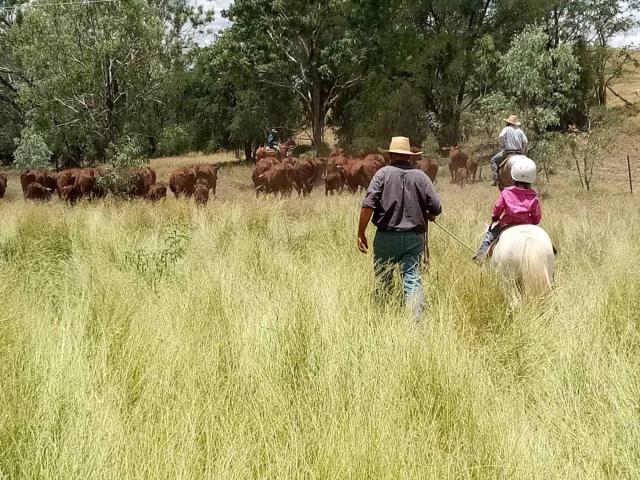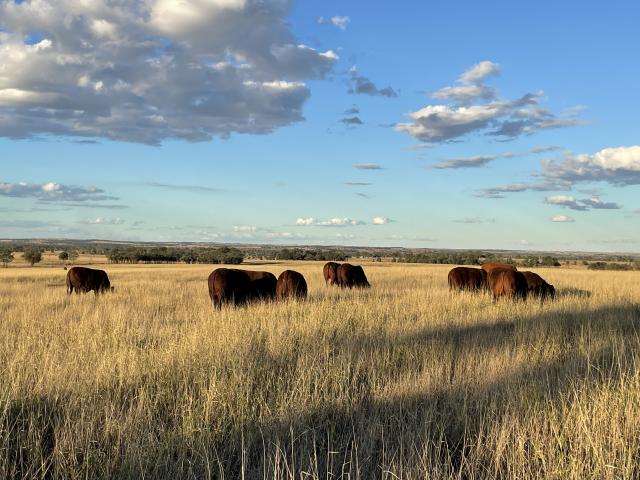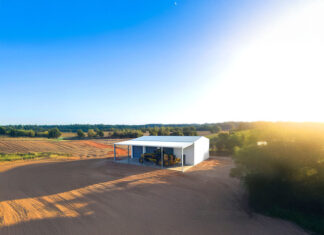
Ben Adams, Kingswood, Taroom, remembers a time during drought when he sold a B-Double full of skinny cows for $13,500 gross.
Now, he is receiving $50,000 per deck.
“I certainly have never seen prices like this,” Mr Adams said.
“Even the generation before me say it’s well and truly the best time they’ve ever seen.
“During the dry days of 2019, which is only three years ago, I would have happily handed the keys over to someone else for a while as things just felt like they were getting out of control.
“So, it’s a massive change and we need to enjoy the good times now.
“Our family is trying to make the most of it. Unlike others, we’re not expanding but consolidating and completing improvements to prepare for when the times are not so good.”
Mr Adams is the fourth generation to run Dangarfield Santa Gertrudis, a family-operated seedstock operation founded in 1983.
The stud is spread across six properties around the Taroom/Wandoan areas in the Western Downs and the herd comprises 1200 breeders.
Mr Adams said while he was of course grateful for “historically high” prices received, they were offset by ever-increasing input costs.
“As a beef breeder, it’s all pretty good in general, it just feels a bit uncertain and we would all like some stability and sustainability,” he said.
“We’re at a stage where we are keen for it to even out and plateau, so everyone in the beef industry knows where they stand”.
According to Meat & Livestock Australia (MLA), beef production will top record volumes – even above the highs set during the drought-induced turnoff of 2019 – by 2024.
MLA cattle industry projections for 2022 say production will lift 12 per cent this year to 2.08 million tonnes and will reach 2.44m tonnes by 2024.
If so, that is 32pc above last year’s production that will also equate to record export levels. In 2022, more than one million tonnes are expected to be exported.
MLA’s herd projection of 4pc growth this year to 27.2m head is a slight reduction on what it predicted last year. Due, in part, to conception and fertility impacts of drought still affecting northern production systems.
MLA’s market information manager Steve Bignell said 80pc of Queensland was forecast to get above average rainfall, which would underpin a strong start to 2022.
“Should the 2022 season not turn out that favourable, we can still rest assured it won’t be as bad as 2018 or ’19 because that good outlook for the next three months will mean there is water in dams, soil moisture, grass on the ground and grain.“
MLA market information analyst Ripley Atkinson said while the national breeding herd was young due to the turnoff of cows during drought, favourable reproductive conditions for young females were expected to counteract the challenge of joining first and second calving females.
“We are expecting supply to increase in the second half of this year on the back of the numbers of calves born in spring 2020 or autumn 2021,“ he said.
“Female calves coming through have grown up under favourable seasonal conditions which will promote branding rates into the future.“
Facts
* National herd forecast to grow by 1.1 million in 2022 as herd rebuild becomes more pronounced.
* Slaughter numbers forecast to rise by 11 per cent in 2022, driven by increased supply.
* Production volumes expected to reach 2.08m tonnes, a positive for export markets.








